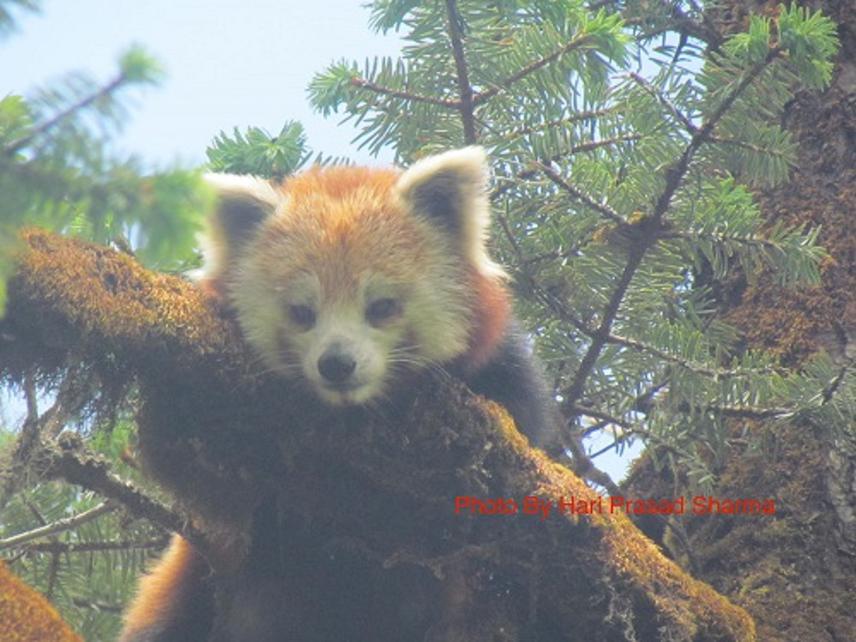Hari Prasad Sharma
Other projects
8 Feb 2011
Exploration and Diet Analysis of Red Panda (Ailurus fulgens) for its Conservation in Khaptad National Park
10 Sep 2015
Red Panda Conservation in Nepal: Integrating Human Knowledge and Scientific Evidence to Assess Wildlife Population Health
The current aim of this study is to conduct a conservation education program to raise awareness on the local people to reduce livestock use in red panda habitat.

Red panda. ©Hari Prasad Sharma.
The red panda, Ailurus fulgens, primarily herbivorous member of the Carnivora, is endemic in the Himalayas. It is classified globally as vulnerable to extinction by the IUCN and in Nepal as a protected priority species under the National Parks and Wild Conservation Act 1973. Anthropogenic changes to the environment, including deforestation, species invasions, climate change as well as infectious disease result in the decline of many wildlife populations. Among these factors, identifying those that specifically drive population declines is also a great challenge on red panda. Understanding effects of anthropogenic activities especially livestock grazing, possible transfer of parasites from them to the red panda are important threats for the species’ conservation.
The current aim of this study is to conduct a conservation education program to raise awareness on the local people to reduce livestock use in red panda habitat. Further, we are unaware of potential parasites in red pandas and livestock. Therefore, we desire to develop baseline data on possible threats on red panda from parasites, potential modes of parasite transmission, and conduct conservation awareness programmes in Rara and Langtang National Park, Nepal.
Fecal pellets of red panda and dungs of livestock will be collected for parasitic identification during this study. Interaction with herders and local people will play an important role for establishing future conservation scenario of red panda in the study areas. Results will be disseminated to the government agencies, academic institutions, and other stakeholders in the form of policies recommendation, and research papers.